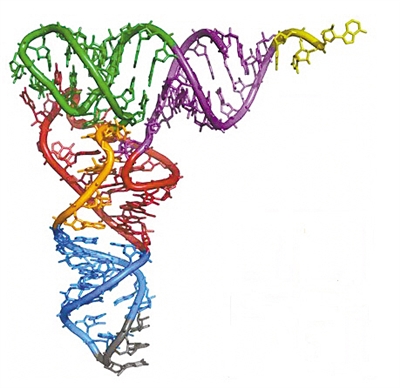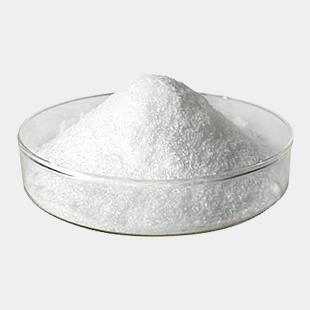Long-term misunderstanding of non-coding RNAs with "cognitive black holes" May 08, 2018 Source: Science and Technology Daily In the human genome, 95% of genes do not encode proteins, and other species also have a large number of non-coding genes. These DNAs are not encoded into proteins, but they transcribe non-coding RNAs. What do they do for life activities? Is it an evolutionary redundancy or a mysterious cache? "Cell" magazine recently published a research paper by the team of Chinese Academy of Engineering Cao Xuetao, who discovered a new non-coding RNA molecule. The molecule is able to regulate the "in" and "retreat" of the immune system, which has never been recognized and proven by the academic community. “Because of the low abundance of long-chain non-coding RNA (lncRNA), the industry is very controversial about its function.†Xu Pinglong, a professor at the Institute of Life Sciences of Zhejiang University, commented in an interview earlier, but the study published rigorously identified the institute. A new type of lncRNA was found to be functional, that is, capable of immune regulation, and Academician Cao Xuetao is one of the main pioneers of this mechanism. Haystack cells from the vast layers of screening out Although the cells are small, they are like a dragon. Look for an RNA molecule that doesn't know it doesn't exist, such as a needle in a haystack. Where can I find clues? The virus infection gave Cao Xuetao a revelation. Speaking of why it is considered from the perspective of the "enemy" of the virus. Cao Xuetao said: "Our Chinese culture says that there is yang in the yin and yin in the yang. This is difficult for foreigners to understand. This philosophy guides our understanding of the immune system that activation and inhibition are likely to blend in one At that point, then we will break through the problem from this 'combination point'." Since the in vivo protein recognizes foreign viral RNA, can it recognize the body's own RNA? Most of the scientific community thinks it can't. "The immune system has the ability to recognize 'self' and 'not me', just like the border guards, sensitive to external aggression, and blind to the 'residents' within the jurisdiction." One of the members of the academician Cao Xuetao, Institute of Basic Medical Sciences, Chinese Academy of Medical Sciences Professor Jiang Minghong said, "But Mr. Cao does not think so. He said that it is not blind to you, you have to prove it." Under the guidance of Chinese traditional philosophical thinking, Cao Xuetao has locked a known key protein, “RIG-Iâ€, to verify whether this protein that binds to viral RNA will bind to its own RNA molecules. RIG-I is like a molecular mousetrap. In 2011, scientists analyzed the molecular structure of this protein. When the mouse (viral RNA) did not come, the clips were combined and the domains at the two sides interacted. The protein is in a "closed" state; once the "mouse" comes, it combines with one end of the clip and the other end "bounces" and the peptone is activated. Such a conformational change will cause the cells to synthesize a key antiviral molecule, interferon, which is secreted by the surrounding cells after secretion, triggering a "chain reaction" of antiviral. The team used the UV-enhanced RNA-binding protein immunoprecipitation (UV-RIP) method to separate the "mouse clip" from the "mouse" it hunted from the cell. Subsequently, all the RNA bound to RIG-I was obtained by filtering out the "mouse clip" by means of protein denaturation or the like. Are there any functional lncRNAs that have not been found in all the RNAs caught by the clip? After locking the range of the "fishing needle" to the clip "fishing" the RNA, the team continued to narrow the scope by designing the corresponding interference experiment, that is, after seeing which RNA was blocked, the immune activity was no longer suppressed. Feature filtering helps the team lock in a number of candidates and list "ranks." The top-ranking RNA molecule, and the lnc-Lsm3b associated with a specific signaling pathway is locked, and a new RNA molecule is “salted†from the vast mouse macrophages through layer screening and the exact sequence is obtained. . The team carried out multi-angle proof work, such as through interference, knockout, over-expression and other techniques, repeatedly proved that lnc-Lsm3b can lock RIG-I in the virus-infected cells by means of “molecular decoyâ€, so that it does not Binds to viral RNA. Massive experiments sharp top journals problems are overcome one by one The new discovery made the team excited. Unexpectedly, the bigger honing is still behind. The team submitted contributions to top journals, but reviewers asked that CLIP (cross-interconnect immunoprecipitation) technology must be used to identify which point of RNA and protein interactions are linked together. It is difficult to explain the intricate association of proteins and RNA in living cells with language. Jiang Minghong gave a report to the Science and Technology Daily reporter: A long-chain RNA will bind multiple proteins. Some of these proteins are specifically linked, and they are tightly connected, and some are "hanging". Above, and other RNAs will be carried in addition to the protein, "wrap", "join", "virtual"... CLIP is difficult to do, and domestic laboratories rarely have mature experience. Team members who received the revised comments began to consult the paper in large numbers. "The foreign experimental process can not be completely copied, different cell practices are different, and the conditions need to be re-examined." Liu Lun, who mainly tackles this technology in the team, said. The CLIP technique is similar to the RIP (RNA Binding Protein Immunoprecipitation) technique, but is capable of achieving a single base resolution. To this end, through massive experiments, the team began to understand how the components of the lysate affect the intracellular substances; the temper of different RNases is also well mastered. "The part of the lab we have overcome ourselves, but the sequencing company said that it is impossible to perform matching sequencing work because it is impossible to synthesize specific primers." Liu Lun said that there is no domestic company to produce primers for CLIP, and RNA sequencing must be reversed. Transcription into cDNA can be performed, and the primer determines the accuracy of reverse transcription and determines whether the target site can be determined. The laboratory itself is responsible for RNA transcription and construction of cDNA libraries. Complete 3 generations of sequencing, chemically measure the interaction between molecules... The problems that these immune research laboratories were not good at were solved by the team one by one. What I want to explore and master a set of unique technical system According to the findings, the team confirmed by using molecular sieve chromatography that the macrophage expressing lnc-Lsm3b was infected with the virus, and the multimerized RIG-I protein was significantly increased. They speculated that the combination of viral RNA and RIG-I could induce the formation of a multimerization state of RIG-I monomer, thereby activating the downstream signaling pathway. While lnc-Lsm3b binds only to monomers, it may inhibit the activity of RIG-I by inhibiting the formation of RIG-I. "Lsm3b can only bind to the monomeric RIG-I protein, one chain can bind 9 proteins, and the binding capacity is higher than viral RNA..." These are all multi-angle understandings of this new RNA molecule. Just like a beam of light into the "black hole", the team of Cao Xuetao affirmed the previous controversy about the existence and functional geometry of such self-RNA molecules while subverting the existing knowledge system. "In the past, we used other people's technology to conduct experiments. Now we are groping and mastering a unique set of technologies." Cao Xuetao said that the "training" of the whole research not only expands the "knowledge domain" of human beings, but also expands the thinking of the laboratory. And the horizon. After receiving the "unbelievable" and tremendous pressure from the editorial department of "Cell" magazine to modify the request, the team members can now laugh. "It's just that this RNA has very low homology with humans." Jiang Minghong expressed a small pity, which means that the discovery cannot be directly applied to the field of human new drug creation, but other institutions with human cell material, This path can be used to further discover whether similar RNA is present in the human body. What Cao Xuetao pays more attention to is that once the method of determining the target is mastered with high quality, the target of the protein can be determined, and then the target of the drug action can be determined, and the research and development of the antiviral drug can be assisted. (Reporter Zhang Jiaxing)
Citric Acid is mainly used as flavoring agent, preservative and antistaling agent in food and beverage industry. Citric Acid also can be used as antioxidant, plasticizer, detergent in chemical, cosmetics and detergent industries. As a food additive, Citric Acid Anhydrous is an essential food ingredient in our food supply. As a leading Food Additives and food ingredients supplier in China, we can provide you with high quality Citric Acid Anhydrous.
Citric Acid,Citric Acid Anhydrous,Citric Acid Monohydrate,Food Additives Citric Acid Shandong Tiancheng Chemical Co., Ltd. , https://www.tianchengchemical.com

Long-term misunderstanding of non-coding RNAs with "cognitive black holes"
Next Article
Eggplant efficacy and effects and taboos
Prev Article
Potato fertilizer requirement